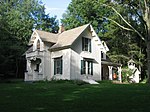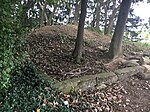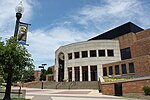Cooperrider-Kent Bog State Nature Preserve
1985 establishments in OhioBogs of OhioKent, OhioLandforms of Portage County, OhioOhio State Nature Preserves ... and 2 more
Protected areas established in 1985Protected areas of Portage County, Ohio

The Cooperrider-Kent Bog State Nature Preserve is state nature preserve located mainly in Kent, Ohio. The preserve surrounds the Kent Bog, a remnant of the Wisconsin Glaciation. It is a true bog with acidic waters, and unique environmental conditions have enabled it to survive. The bog contains the largest stand of tamarack trees in the state of Ohio.
Excerpt from the Wikipedia article Cooperrider-Kent Bog State Nature Preserve (License: CC BY-SA 3.0, Authors, Images).Cooperrider-Kent Bog State Nature Preserve
Tom S. Cooperrider-Kent Bog State Nature Preserve Walking Path, Kent
Geographical coordinates (GPS) Address Nearby Places Show on map
Geographical coordinates (GPS)
| Latitude | Longitude |
|---|---|
| N 41.129444 ° | E -81.353611 ° |
Address
Tom S. Cooperrider-Kent Bog State Nature Preserve Parking Lot
Tom S. Cooperrider-Kent Bog State Nature Preserve Walking Path
44240 Kent
Ohio, United States
Open on Google Maps






